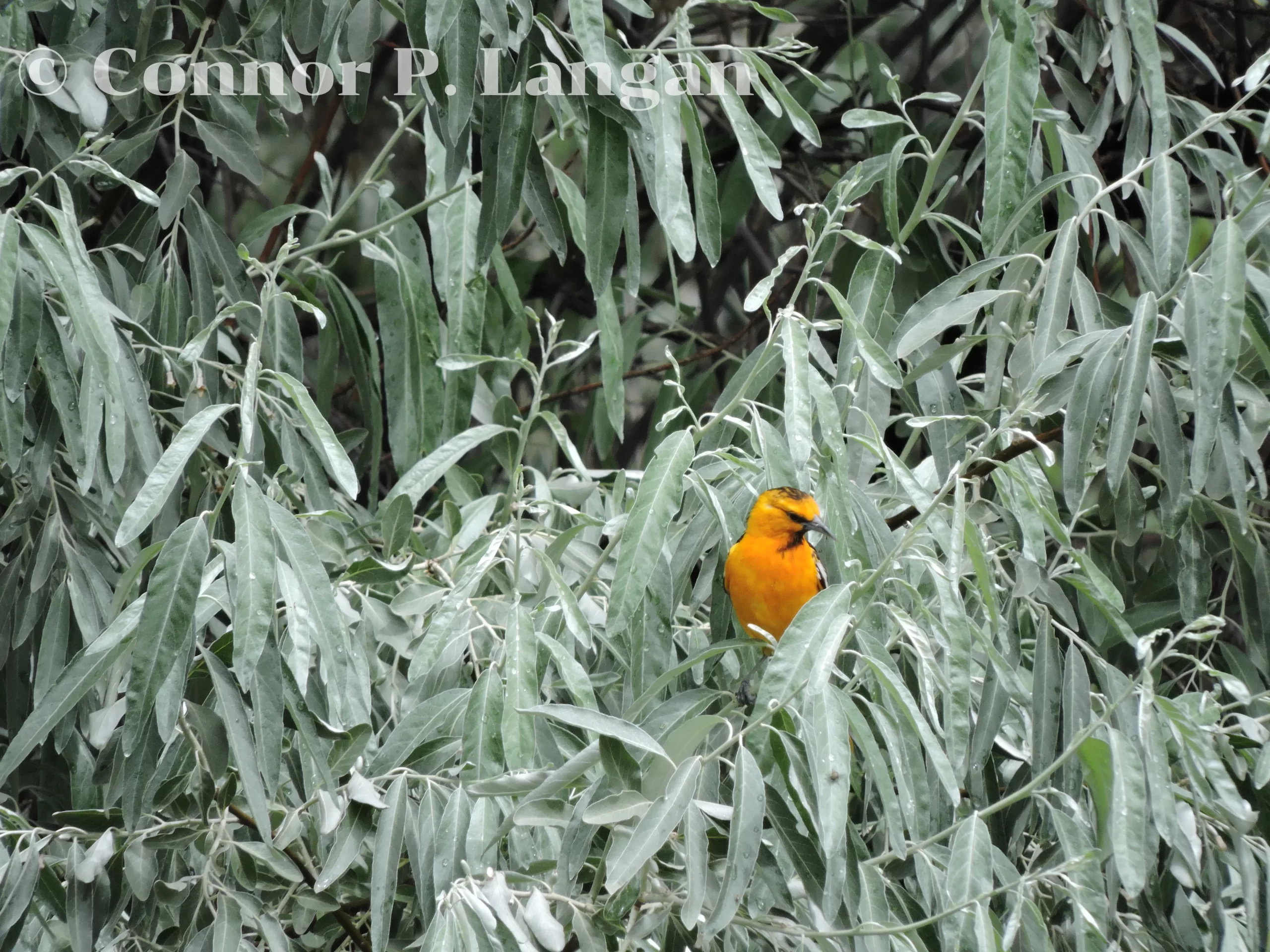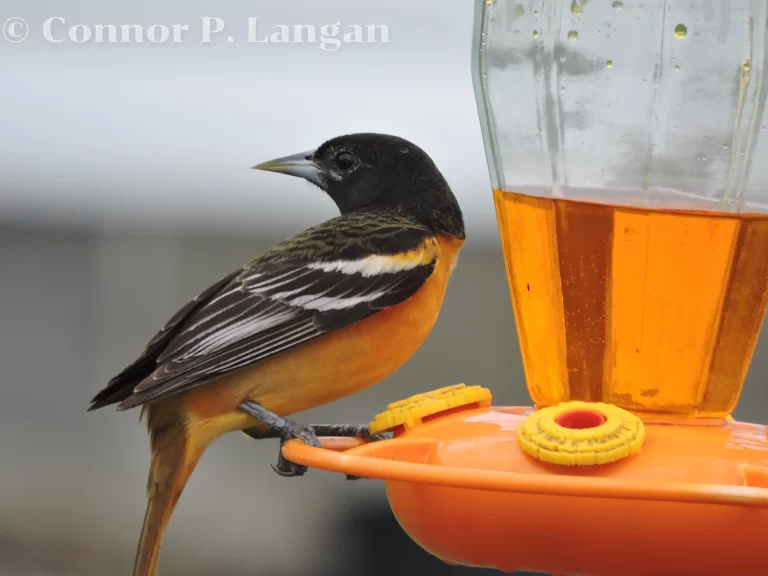Description
Bullock’s Orioles are medium-sized blackbirds with fairly long, thin beaks and medium-length tails.
These birds measure up to 7.5 inches long, while they weigh 1 to 1.5 ounces.
Male Bullock’s Orioles have orange undersides and black upperparts. Males have primarily orange faces with a black line extending through their eyes. Additionally, males have a black throat and black cap. The black wings of males are offset by extensive white coloration.
Female Bullock’s Orioles have orange faces, chests, and tails. These birds have white stomachs and gray backs and wings. A female Bullock’s Oriole also has white on its wings.
Immature males look similar to females, but they develop a black throat and black stripe through their eyes.
Behavior
Bullock’s Orioles often gather in groups during migration. In the breeding season, these birds establish territories but don’t act territorial unless another bird nears their nest.
Bullock’s Oriole pairs will cooperate to fend off potential predators from the nest site. Both male and female Bullock’s Orioles sing, though females only tend to sing near the nest site.
Diet
Bullock’s Orioles consume fruits, nectar, and insects. These birds focus their energy on finding and consuming insects during the breeding season, as insects are particularly abundant at this time.
During migration and the nonbreeding season, Bullock’s Orioles adjust their diet to consume more fruits and nectar, as they foods allow them to quickly build up fat reserves.

Habitat
Bullock’s Orioles seek out large trees in fairly open areas. These birds will not nest in dense stands of forests. Rather, these birds nest in sizable trees in areas like parks, windbreaks, and backyards.
Bullock’s Orioles prefer to nest in large deciduous trees, with this species rarely nesting in conifers. In the winter, Bullock’s Orioles frequent habitats that are similar to the ones that they use in the breeding season.
Range
Bullock’s Oriole range extends west of the Great Plains. They are widespread in the United States but have a limited range in Canada.
Most of the Bullock’s Oriole population spends the winter in Mexico, though some birds winter in Central America.
Breeding
Bullock’s Orioles are socially monogamous by nature, and these birds typically find new mates each year.
Once a male and female Bullock’s Oriole form a pair bond, females begin working on the nest. A Bullock’s Oriole nest is placed up to 25 feet up in large deciduous trees.
They create incredible nests that are similar to covered hanging baskets. To create a Bullock’s Oriole nest, females create makeshift knots to anchor their nest to a forked tree branch. A female Bullock’s Oriole then uses grasses, plant stems, and plant fibers to weave an intricate nest with a small opening to enter and exit.
These blackbirds typically have a single brood of eggs each year, with each brood containing 3 to 7 eggs. It takes around 2 weeks for the young to hatch, and these birds leave the nest another 2 weeks later.
Backyard Birding
Bullock’s Orioles are a popular backyard bird around homes west of the Great Plains. These birds will readily visit jelly feeders and offerings of halved oranges.
Watching a Bullock’s Oriole lap up jelly from a jelly feeder with its tongue is a delight for backyard birders. Fortunately, these blackbirds are easily attracted to jelly feeders and halved oranges.
Population Status
Bullock’s Oriole populations have declined by over 25% in the past half-century. There are around 7.5 million Bullock’s Orioles today.


